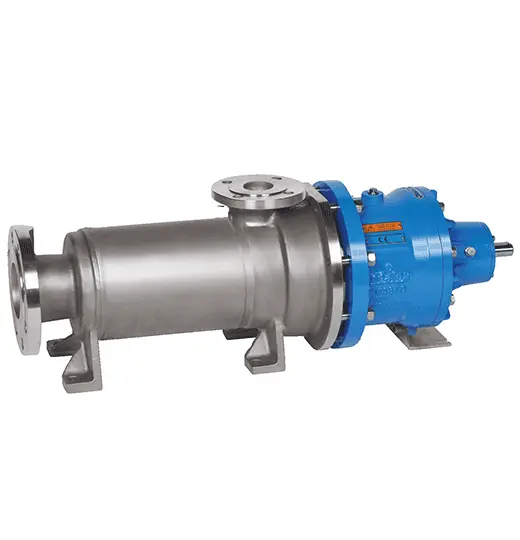Magnetic Pumps
| Standard | Parameter | Information | |||
|---|---|---|---|---|---|

|
XYB-SV | ||||

|
XYB-NV | ||||

|
XYB-GV | ||||

|
XYB-AV |
|
|||

|
XYB-AP |
About Magnetic Pumps
Magnetic Pumps are a type of pump that uses a magnetic coupling to transmit torque to an impeller, which moves the fluid1. The motor is coupled to the pump by a magnet, rather than a direct mechanical shaft.
How Does a Magnetic Pump Work?
The attraction of the drive magnet and the impeller magnet allows the full torque of the motor to be passed onto the impeller. As the shaft of the motor does not extend into the interior of the pump, there is no need for a shaft seal. As the impeller is not fixed to the motor shaft, the impeller floats inside the pump housings. The impeller spins, at the same speed as the motor, supported by a stationary shaft. The only moving part which touches the liquid is the impeller. Without a shaft seal, the danger of leakage commonly associated with a shaft seal is eliminated.
Magnetic Pump Terms
To obtain a clearer understanding of Magnetic Pumps, it’s helpful to examine the various terms associated with them. The most common terms used include:
- Magnetic coupling: A mechanism that uses magnetic fields to transmit torque from the motor to the impeller, eliminating the need for a mechanical seal.
- Wet end: The part of the pump that comes into contact with the fluid being pumped.
- Dry end: The part of the pump that houses the motor and is separated from the wet end by a containment shell.
- Containment shell: A barrier that separates the wet end from the dry end and prevents the fluid from leaking out of the pump.
- Impeller: The rotating component of the pump that moves the fluid.
- Drive magnet: A magnet attached to the motor shaft that rotates around the rear housing.
- Shaft seal: A component that prevents fluid from leaking along the motor shaft.

 +86 18157321655
+86 18157321655
 ruichen@zjrcpump.com
ruichen@zjrcpump.com